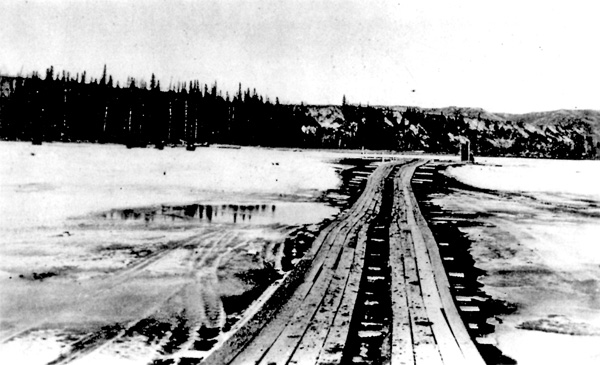
Four separate trains hauled the 43 officers and 1230 enlisted men of the 35th Engineering Regiment to Dawson Creek. The last train arrived in late afternoon on March 16. Everyone confronted the Peace River.
The First Soldiers on the Highway
Colonel Hoge had flown to Fort St. John and set up temporary headquarters in a local log cabin; directed Colonel Ingalls to divide the regiment, send half immediately to Fort Nelson and keep the other half at Ft. St. John. Realizing that Peace River ice wouldn’t last much long, he changed his mind; would send them all.
Bundled in frozen parkas, faces frosted and noses blanched white, the 35th waddled up the trail like a flock of penguins. Shivering operators of tractors and trucks led the march.

Short periods of early spring warmth might have been welcomed, but they softened the river ice—a bigger problem than mere comfort. Crossing troops encountered large cracks and the ice undulated and heaved under the weight of a heavy tractor. The slightest bit of melting made these phenomena immeasurably worse.
Troops collected sawdust from every sawmill they could find and spread it over the frozen river hoping to blanket and insulate the precious ice. Planks over the sawdust kept the tracks and wheels from scattering it. Colonel Ingalls ordered soldiers and equipment to cross the Peace River only during colder night time hours. The ice held, wavering menacingly, as men and machines worked their way across.
Awesome Fennis! I feel the cold…
I know what you mean. I felt it as I wrote it